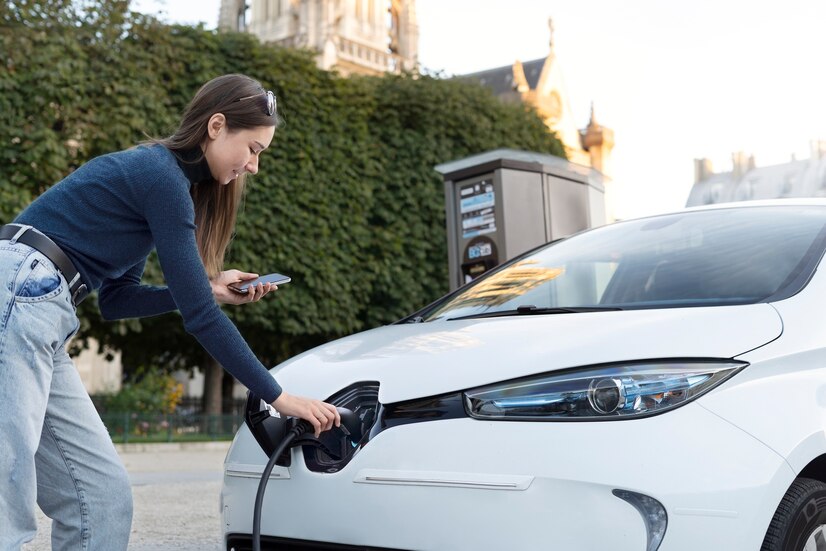Registrations of electric cars (EVs) increased significantly in the first quarter of 2022, indicating that EVs are finally becoming more popular in the United States. According to a survey from Automotive Information, about 158,689 EVs were registered in the first quarter of 2022, an increase of 60 percent.
Tesla EVs accounted for the majority of new EV registrations, with 113,882 new Teslas hitting the road, a nearly 72% increase. Kia came in second with 8,450 rolls, followed by Ford with 7,407 Mustang Mach-E registrations. With 6,984 registrations, Hyundai has also seen a significant increase in EV sales.
In addition, the increased registrations for EVs contrast with the 18% decline in registrations for all new vehicles in the first three months of this year. As gasoline charges maintain to spike and additional recent EVs change into accessible, registrations for brand-spanking new EVs will improve.
EV buyers continue to be concerned about range anxiety and charging infrastructure. Although the increasing number of new EVs on the road is good news, there is still the charging station issue. The increased number of electric vehicles increases the need for charging facilities. The Biden administration has set a goal of creating 500,000 public charging stations countrywide by 2030. However, the current issue is that the number of electric vehicles on the road exceeds the number of available chargers. For example, California has 12.23 EVs for every EV charger.
While we await the return of more EV chargers, communities may implement various measures to reduce the number of automobiles on the road, hence decreasing the need for EV charges. There are already many cities throughout the world that encourage walking and riding. To reduce emissions and provide more secure zones for walking and bicycling, cities like Paris have planned to prohibit automobiles from entering the city core. Different cities, such as New York City, have constructed pedestrian-only, protected zones like The Highline. However, in the United States, most larger cities have not taken significant measures to reduce the number of automobiles on the road.

Electric vehicles are confronted with a supply chain environment that is becoming more difficult.
Electric vehicles have a promising future, but danger signs emanate from their supply chain, as the price of bulk materials increases for the whole auto industry. The cost of steel, aluminum, and copper increased by more than 33 percent in 2021, hurting both conventional and electric vehicles. The price of lithium carbonate jumped by 150% year-over-year, graphite by 15%, and nickel by 25%, to mention a few, posing further difficulties for electric vehicles.
Since 2020, volume-weighted average battery costs have not changed, which is maybe unexpected. Three reasons account for the price stability. First, battery prices are on a long-term downward trend, and sustained technical advancement has helped to offset increased raw material prices. Second, there is a lag between material price spikes and battery price rises since expenses take time to go through the value chain. Thirdly, lithium ferrophosphate (LFP) chemistries in batteries have expanded, mitigating some of the effects of price increases. However, battery costs will be influenced if the price of battery metals continues to climb.
Several automakers also experienced microprocessor shortages, which hindered production. Several EV assembly lines were shut down for several weeks, resulting in supply delays. Complex factors contributed to the microchip shortfall, but in general, a faster-than-anticipated resurgence in vehicle sales and other microprocessor-reliant items coincided with a microchip deficit. The deficit is serious for EVs, which need almost twice as many chips as conventional cars with equal power electronics components. Without these disturbances, it is feasible that electric vehicle sales in 2021 would have been much more significant.
As the market rebalances, some of the supply restrictions of 2021 may alleviate, but others may persist. In 2021, the EV value chain proved resilient, as it could meet greater-than-anticipated demand. However, for EVs to maintain their present growth trajectory, battery supply chains and EV manufacturing capacity will need to increase rapidly. In the last two years, short-term demand and long-term ambition have risen, but supply chains have failed.
Last year’s IEA special report on The Role of Critical Minerals in Clean Energy Transitions emphasized that lithium and cobalt shortages might occur as early as 2025 if enough investments are not made to increase supply. Further development of EVs demands not just an increase in the extraction of essential minerals but also an extension of the whole EV supply chain. This includes battery metal processing and refining, cathode and anode manufacture, separator production, cell production, battery assembly, and electric vehicle assembly. To prevent bottlenecks that might hinder the transition to complete electric mobility, each of these sectors, some of which are fledgling, must develop swiftly.
EVs are about to enter a new phase in which raw material and component supply become the focal point of policymaking as crucial parts of the transition to clean energy. For the first time, supply-side bottlenecks are becoming a significant obstacle to the electrification of road transportation, in addition to the typical demand-side barriers. Policy actions must adapt and provide the market with unambiguous long-term signals to support investments in further supply-side expansions. The most recent US infrastructure bill, which aims to incentivize investments in battery raw materials, and the EU’s Important Projects of Common European Interests emphasize batteries are instances of this shift in emphasis. In the spring edition of this year’s Global Electric Vehicle Outlook, these and other significant factors will be examined in further detail.
The IEA is supporting initiatives to switch to electric vehicles
Government and business activities will now define the transition to EVs in the future decades. There are various new obstacles to overcome on the road ahead:
Increasingly effective demand-stimulating policies are persuading people to adopt electric automobiles. However, as the transformation advances, governments must not suddenly alter the existing incentive systems. Instead, incentives and subsidies must evolve into more targeted and financially viable instruments.
The rise of the battery business might strain the supply chain for raw materials. To assure a flourishing EV sector, governments must establish clear legislative frameworks and stimulate international cooperation to ensure that the necessary investments are made on time and ecologically and socially sustainable.
As the number of electric vehicles (EVs) grows, so will the requirement for charging infrastructure. The present sales momentum can only be maintained if an ever-increasing proportion of the population has access to simple and inexpensive charging infrastructure. Governments must reduce market and non-market impediments to the rollout of charging infrastructure to stimulate investment in this sector.
The IEA will continue to assist governments in understanding and evaluating policy choices for the electrification of road transport, as well as providing independent analysis on the subject, particularly in the forthcoming Global Electric Vehicle Outlook. In addition, the IEA will facilitate international cooperation to expedite the transition to zero-emissions transportation and provide a venue for governments to discuss best practices to accelerate electrification, mainly via the CEM Electric Vehicle Initiative. In this respect, the IEA will further assist the efforts of developing countries to capitalize on the potential presented by EVs by collaborating with the UN Environment Programme and other partners on the GEF-7 Global E-Mobility Program.
- About the Author
- Latest Posts
A passionate advocate for all natural and sustainable ideas. With a background in sustainable economics science and a deep love for nature, Sojy has dedicated his career to promoting eco-friendly practices and encouraging others to live a more sustainable lifestyle. He is an avid hiker, gardener, and cook, and loves experimenting with natural ingredients in his recipes and lifestyle routines. Sojy believes that small changes can make a big impact and is constantly seeking out new ways to reduce his carbon footprint and inspire others to do the same



